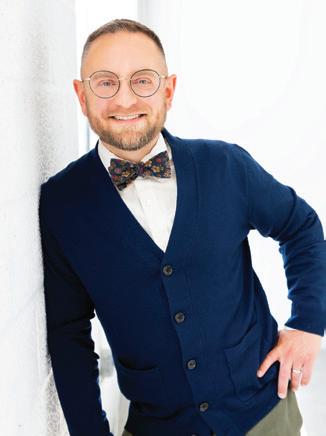
3 minute read
OP-ED: Thoughts on how Brown can do better for Providence
Issued just in time for commencement and the Corporation meeting, the statement confirms that the main campus was indeed built on land dispossessed from indigenous peoples of the Narragansett Indian Tribe. Paxson also reaffirms the university’s commitment to work together with the tribe “to honor our past and build our future with truth.” The school’s relationship with the tribe goes back 258 years and even includes an illustration of Roger Williams’ initial encounter with the Narragansetts decorating one column of Brown’s (hallowed) Van Wickle Gates.
The university continues to earn well-deserved respect for its ongoing efforts to bring these historic entanglements with the Narragansett Tribe, as well as slavery and international slave trade, to light. How the university “compensates” these two constituencies will be the real story. But while laudable that Brown confronts its past, we would be remiss if we didn’t urge it to not ignore the present.
In this case, we mean Brown’s relationship to the City of Providence.
The facts are obvious. Brown’s East Side campus alone is valued in excess of $1.3 billion, but through the Payment In Lieu of Taxes (PILOT), pays a paltry $4.4 million annually. Brown continues to expand into the Jewelry District and downtown, willing to pay taxes for a period, but this will disappear over time. Got to hand it to the University – they do know how to negotiate. In the last PILOT, the City actually gave Brown parking on city streets (that the City still has to maintain) near the campus worth a million dollars in lost parking revenue. And lest you forget, Brown’s endowment grew by over $2 Billion (yes with a “B”) last year.
It is long overdue that the school convenes a similarly diverse group of interested and invested parties to determine a more appropriate payment level consistent with other peer universities. Since the school has a workable model already in place, based on the progress of the initial reparations discussions, this might work.
The importance of Brown as being seen as an integral part of the broader community was in evidence in the recent unsuccessful attempt to merge its well-respected medical and public health schools into the controversial merger of Lifespan and Care New England. To quote Attorney General Peter Neronha as he denied the application, “I see nothing that suggests what Brown’s role in the project will be.” Brown clearly needs to do more outreach work here, especially in the area of public health for its home state. And since it is Providence that has to deal with the brunt of lost tax revenue and stress on its systems as the school expands, there must be some acknowledgement that it, like its peers, needs to do more.
Interestingly, perhaps the ongoing negotiations with the Narragansett Tribe might offer an opportunity to at least investigate. The university’s main contact to the Tribe is through its Land Acknowledgement Working Group, which is headed by John Brown III, the Narragansett’s Tribal Medicine Man and Historic Preservation Officer (not believed to be a direct descendant of Brown’s founder and namesake). Given his negotiating skills and relationships with the Wampanoags in Boston and the Quinnipiacs in New Haven, Mr. Brown might be a useful ally in talks to improve our delivery of public health with either Mass General Brigham or Yale.
The motto of Brown remains In Deo Speramus (In God We Hope). In that spirit of hope, we raise our beers (Narragansett of course) and toast Brown on its progress in dealing with its past and trust they can provide the same passion to help Providence, which is also dispossessed, deal with its future.
As President Paxson nears the end of her successful 15 years at Brown, the school will soon embark on a search for a successor. We trust being a better partner with its community will be given significantly more importance on its new agenda.










